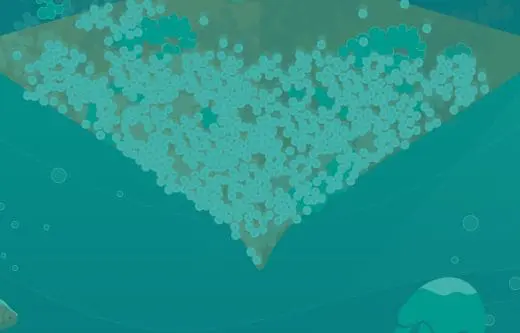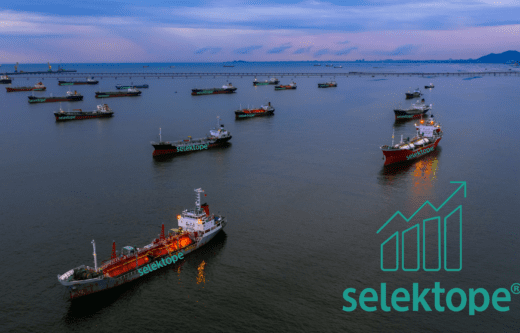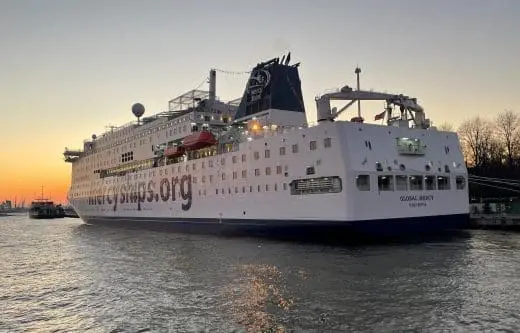Biofouling in the time of COVID-19
While the COVID-19 pandemic has put many parts of the industry in ‘time-out’ mode, the same can’t be said for biofouling. For the thousands of marine species that like to make ship hulls their home, the global pandemic has no limiting effect. In fact, for those organisms who can only attach to ships when they are idle in particular, such as barnacles, the housing market is booming.
With many ship owners and operators facing the prospect of their ships lying idle for months to come; any biofouling accumulation on the hull will bring significant risk to future earning potential when the ship returns to active service. For example, the humble barnacle has a particularly damaging impact on ship fuel consumption or speed. Their volcano-shaped, hard outer shell creates great turbulence across the hull when a ship travels through water. This is an organism that you do not want stuck to your ship when it returns to active service post-pandemic.
Industry impact
The passenger and cruise sectors are very much suffering from the negative impacts of the pandemic, with no passengers to transport from A to B or to host for luxury holidays at sea due to global travel restrictions enforcing the suspension of services across the world. The result being thousands of passenger ships sat at anchor in coastal areas, many of which exposed to high densities of barnacle larvae and other marine organisms waiting to colonise any submerged surface.
However, as the industry sailed into the spring months some sectors of the industry are faring well in the pandemic. The collapse in demand for jet, diesel and petrol has left refiners scrambling to secure tankers to hold their surplus oil and oil products. This means that a great number of tankers, especially in high demand product tankers, are sat at anchor operating as off-shore storage vessels while refiners try to lock in revenue during a period of significant oil price decreases and over supply. These tankers, which are more often than not anchored off the coast, are going to be at risk of barnacle fouling, which will erode profit margins when the ships returns to normal service post-pandemic.
At the same time, market demand reductions in east Asia, the India and the Middle East forced many major container carriers to announce void sailings and the suspension of several services. This means that many containerships will currently be laying idle due to the operational challenges and unusually decreasing demand caused by the pandemic. This puts them at great risk of barnacle fouling, like many of their fellow merchant ships in the global fleet who are on a short hiatus.
Furthermore, as a spill over from some of the dire economic warnings from the IMO on global growth potential, shipping brokerage Clarksons predicts that global seaborne trade may reduce by as much as 5% through 2020, the biggest contraction for 35 years. Consequently, there is the potential that ships may not enjoy only a short hiatus, they may be idle and at great risk from highly impactful barnacle fouling for much longer.
Biofouling: an age-old issue
For as long as ships have been at sea, they have been a magnet for marine life. Whether it be hard (shell-forming creatures such as barnacles) or micro (slime made up of bacteria and algae), even very low biofouling coverage on the hull increases hydrodynamic drag (frictional resistance) as it moves through the water. A hull fouled with shell-forming creatures results in the greatest increase in frictional resistance and as such, barnacles are often seen as enemy number one, since they are responsible for significant hikes in excessive fuel consumption from decreased hull performance.
One commonly cited metric in the antifouling coatings industry, hails from a 2007 study by Michael P. Schultz, which states, “a vessel travelling at 15 knots with a ‘small amount of fouling or weeds’ would require 34% more engine power to maintain a speed of 15 knots, whereas a vessel going at 30 knots with the same amount of fouling will require 22% more power to keep its speed.” Although this particular study was for a naval frigate, the statistics can be applied to ocean-going cargo ships alike.
As well as yielding penalties in terms of performance, fuel consumption and emissions, having a fouled hull presents greater OPEX expense through the frequent need for hull cleaning services. Furthermore, given that hull biofouling has been identified by the IMO as being a vector for the spread of invasive aquatic species between different ecosystems with a great risk to local biodiversity, a vessel with a heavily fouled hull can be denied entry from certain regional ports until the hull is clear of biological hitchhikers. In 2017, a 33,752 dwt Korean-owned bulk carrier DL Marigold was ordered to leave New Zealand waters after its hull was judged to be threat to bio-security following the discovery of dense fouling of barnacles and tube worms on its hull and other underwater surfaces by divers. Under new biosecurity rules that entered into force in May 2018, all international vessels arriving into New Zealand must have a clean hull.
In a very competitive shipping industry, unnecessary delays and the employment of cleaning services can result in a major financial headache for owners and operators. Therefore, the fact that regulation against biofouled vessels is also increasing in other regions also should put biofouling management high on the agenda for most ship owners and operators.
In California, from 1 October 2017, all vessels of 300gt or more have been required to complete and submit a “Marine Invasive Species Program Annual Vessel Reporting Form” at least 24 hours prior to their first arrival of the calendar year at a Californian port, also from January 2018, ships must present a Biofouling Management Plan and record all management actions in a Biofouling Record Book. The hard action taken by California was taken due to the fact that vessel biofouling is believed to be responsible for up to 60% of the established invasive aquatic species along the California coast.
On an international level, no mandatory regulations to act upon biofouling prevention exist. However, in early 2017, the IMO established the GloFouling project that will focus on how biofouling should be controlled and managed to reduce the transfer of invasive aquatic species. This was viewed by many as IMO turning its head from developing mandatory requirements for ballast water treatment to hull biofouling management to reduce the risk of invasive aquatic species transfer by ship hulls.
The threat is increasing
There are a number of factors that suggest biofouling threat has increased over the past few decades. The concentration of organisms that contribute to ship biofouling is heightened in warmer waters, primarily in the tropics and subtropics this is due to a high abundance of food sources, such as plankton. These areas are fondly known as biofouling ‘hotspots’, and for those involved in the business of keeping barnacles at bay – they are commonly referred to as ‘barnacle paradise’. With increasing water temperatures being a bi-product of global warming, these zones are expanding, meaning that a greater number of ships will fall foul of biological hitchhikers in the coming years and decades.
Another factor that has contributed to the intensifying biofouling challenge has been the shift in global trade patterns. The majority of global trade now passes through waters and ports located in the tropics and sub-tropics. Furthermore, in tandem with the geographical shift in global trade routes, expanding trade volumes prior to the pandemic have forced more vessels to be idle in these ports when they are queuing, loading or unloading.
Is there a silver bullet for biofouling prevention?
In short, no silver bullet exists for biofouling prevention. However, innovation is rife in the technology sector that sits as the frontline response to biofouling prevention: antifouling coatings.
The chemistry behind antifouling coatings may be complex, but one thing that is simple to understand is that yesterday’s antifouling coatings are not going to protect ship hulls against the future intensified biofouling challenge.
As such, antifouling coating makers are continuing to investing huge sums of money in R&D activities that seek to perfect new antifouling coatings products or make enhancements to existing products. One such enhancement is the development of antifouling coatings that better protect vessels which are idling for long periods, since there is a great risk of coatings failing to deter marine organisms when a vessel is sat still in high intensity biofouling hotspots.
The dire need for a drop in technology that could add superior barnacle-deterring capability to any antifouling coating without impacting the coating formulation in any way led to the development of Selektope®, a Swedish biotechnology that was commercialised following 15 years of development time. Selektope® is an organic, non-metal active paint additive that is relatively unique compared to traditional biocides currently found in many marine paints. Through natural receptor stimulation, Selektope® activates hyper-mobile behaviour in barnacle larvae, which prevents them from attaching themselves to the hull and niche areas. The effect is temporary while they are in close proximity to the coated surface and ultimately leaves them unharmed. When used in antifouling paints, all ship types can remain idle or at low speeds for extended periods of time, even in extreme barnacle fouling conditions.
The use of Selektope® presents a significant advantage over a reliance on hull-cleaning technologies for hard fouling removal and reduces the risk of coating damage after cleaning. Also, as opposed to the need to constantly monitor hull condition, antifouling coatings with Selektope® confer relative peace of mind to ship owners and operators that their ship hulls will remain barnacle free.
Out of the top six marine coatings manufacturers, three of them have commercialised products containing Selektope® in the past five years: Chugoku Marine Paints, Hempel and Jotun. The technology is also being used in many outfitting coating products following demand from shipyards located in South Korea who were facing the issue of barnacle fouling during long fitting out periods.
Demand for Selektope® in the past five years has soared. Our 2019 annual report provides testament to this. Within a marine coating industry with a USD 3 billion value, I-Tech, as an organisation supplying biotechnology to the marine coating industry, occupies a market value of USD 500 million. 2019 has seen I-Tech secure some of the largest sales orders placed to date with a resulting 57% growth in net turnover in 2019 compared to 2018, making last year our most successful to-date.
Biofouling beyond 2020
The opening months of 2020 have provided some of the most challenging times for the international shipping industry to-date. For any post-pandemic recovery strategies, ship owners need to be looking at strategies that support improved vessel optimisation, and the technologies that lie below the waterline to support this. Tackling the barnacle fouling issue is a proven way to minimise added fuel consumption, unnecessary carbon emissions and the spread of invasive aquatic species. Against the backdrop of the biofouling challenge intensifying, it is encouraging to see the coatings industry adopting new technologies to ensure that the ship hull is protected under any circumstances, post-pandemic and beyond.
CLICK HERE TO READ THIS ARTICLE IN CLEAN SHIPPING INTERNATIONAL MAGAZINE - SUMMER 2020 ISSUE
Related articles

Survey: Barnacle fouling is a significant problem for shipowners

Fascinating facts about barnacles: how they attach to ship hulls?

20 tonnes of Selektope safeguards 2,500 vessels from barnacles

